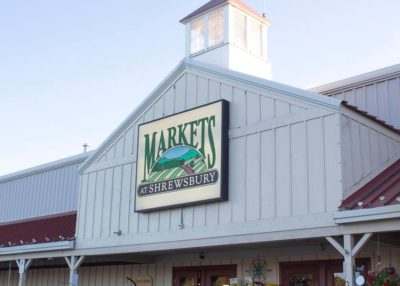If you’re new to shopping for coffee, choosing a roast can be quite confusing as you navigate the shelf. It’s not so much an issue of light roast vs. dark roast, as both are good quality. It all comes down to what taste you prefer.
The roasting process is what gives light, medium, and dark roast coffees such distinct tastes. Before you buy a roast only to discover it’s one you don’t like, here’s our breakdown of the types of coffee roasts, explained in full. That way you can pick a coffee roast level that’s in line with the flavors you typically enjoy.
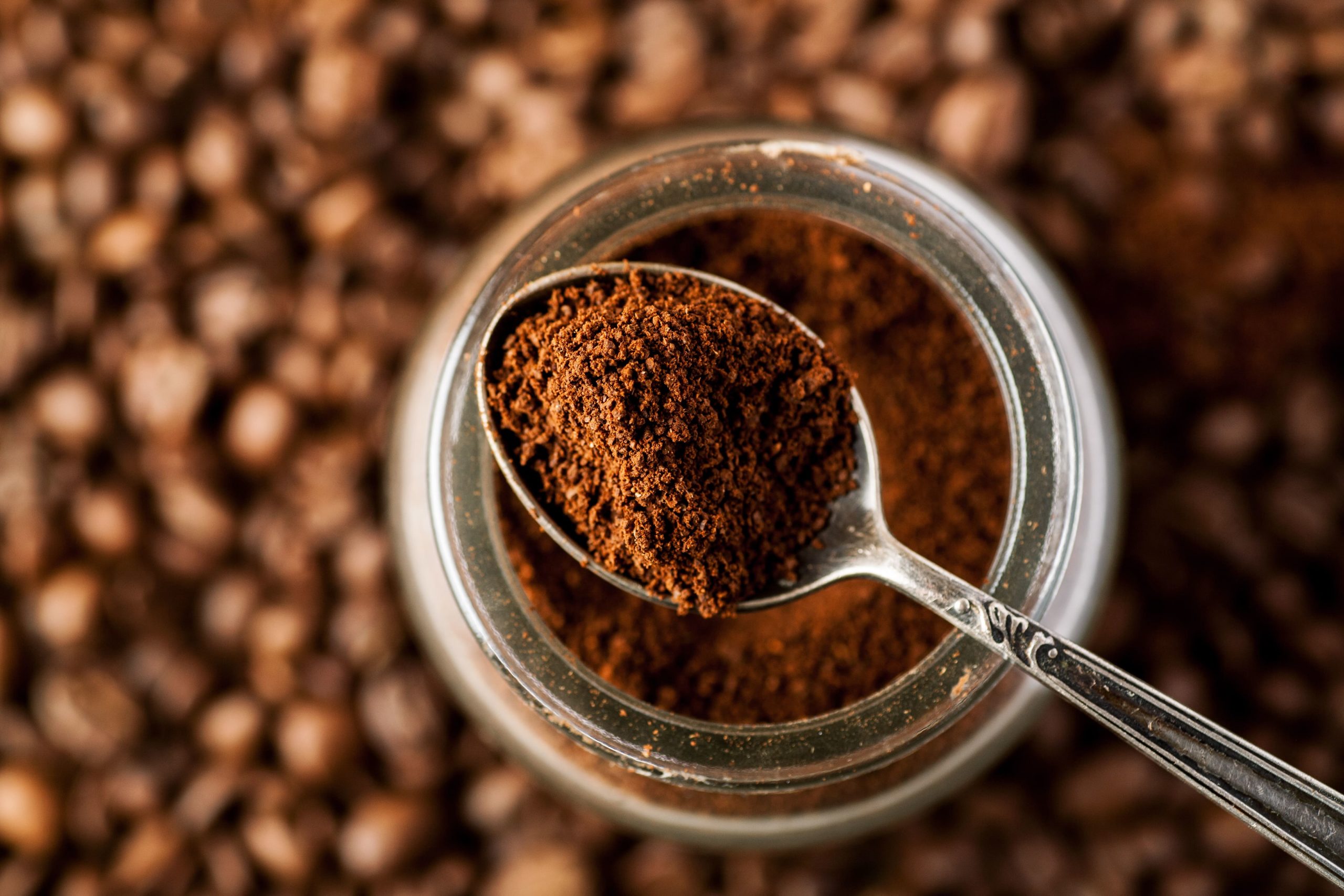
What Is Coffee?
Long before you shop at your favorite farmers market for coffee, it’s harvested from coffee trees, which produce what are known as “coffee cherries.” These coffee cherries take up to a year to mature, starting first as a flower and then turning into a fruit. From there, workers harvest the cherries and remove the seeds from inside.
A typical coffee cherry holds 2 seeds, which are called “beans.” Once the beans are harvested, they are dried, milled, and roasted. And while there are up to one hundred species of coffee plants, our roasted coffee comes from two types of coffee plants: Arabica and Robusta.
Arabica Beans
Arabica beans come from the Coffea Arabica plant, which originates from the highlands of Ethiopia. These beans have a mild flavor and some would even say they’re slightly sweet, with a hint of fruit or berry taste. They’re also used the most in production, as Arabica beans make up about 70% of the coffee products we consume.
Robusta Beans
Robusta beans are taken from a much heartier coffee species that belongs to the family of Rubiaceae plants. Robusta plants can withstand harsher growing conditions making them a cheaper source. The beans are used primarily as a filler in coffee blends or to produce budget-friendly coffee. People describe their taste as burnt, but the reality is that this bean has a high caffeine content which likely makes it seem more bitter.
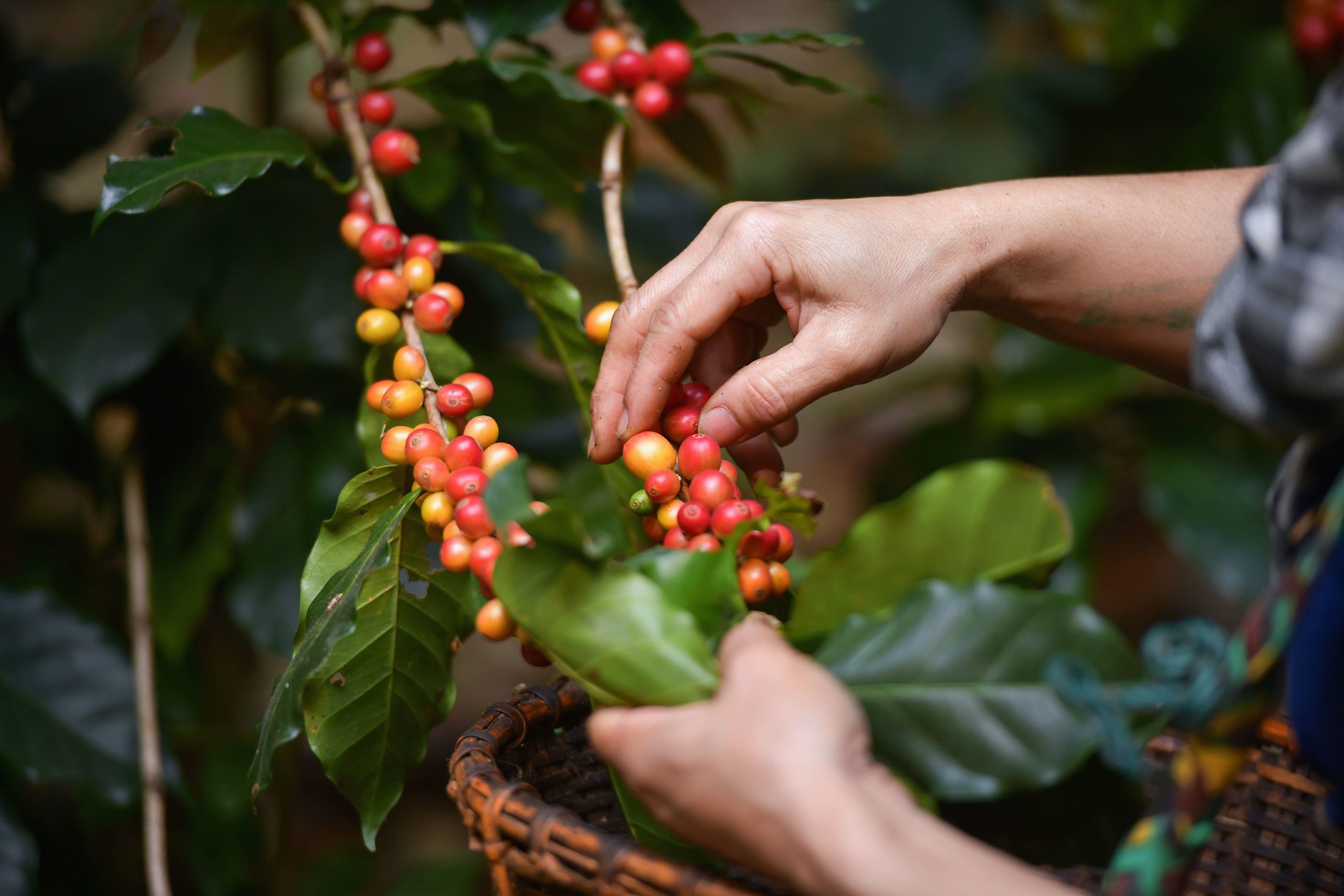
A worker picks coffee cherries from a coffee tree.
How Is Coffee Roasted?
Coffee beans are full of sugars, proteins, and natural acids, which all play a part in its transformation during roasting. This process is an art that requires applying heat carefully to draw out specific aromas and flavors.
Stage 1: Loading Raw Coffee
Workers load raw beans (green in color) into the roasting machine. Once the machine’s internal temperature is 500 degrees Fahrenheit, the beans drop into a spinning drum that tosses them through the air with a paddle.
Stage 2: The Coffee Begins To Roast
During the first 5 minutes, the operator heats the coffee beans up to roasting temperatures. During this part, the beans change color from green to yellow.
Stage 3: It’s Beginning To Look Like Coffee
Next, the roaster lowers the coffee beans temperatures to about 350 degrees Fahrenheit. At this point, the beans start to turn a familiar light brown color.
Stage 4: Pressure Is Building
During the final stages of roasting, the beans reach at least 360 degrees Fahrenheit and crack from the pressure. Inside the bean, a chemical reaction is occurring due to the pressure inside the machine. That loud sound (the “crack”) is allowing internal pressure to escape the bean so that its flavor can be developed.
Stage 5: Flavor Has Arrived
From this point on, coffee roasters have developed what times and temperatures they’ll be using to achieve that final flavor. If they roast the beans above 395 degrees Fahrenheit, they’re creating a dark roast. If they roast under those temperatures, they’re making a light or medium roast. The coffee’s final flavor is the result of more chemical reactions happening inside the bean, like sugars cartelizing and interacting with amino acids.
Types of Coffee Roasts
Still trying to figure out the difference between the various types of coffee roasts? While roasting temperatures play a part, the key differences between each coffee roast level comes down to color, flavor, and the number of “cracks” the coffee undergoes.
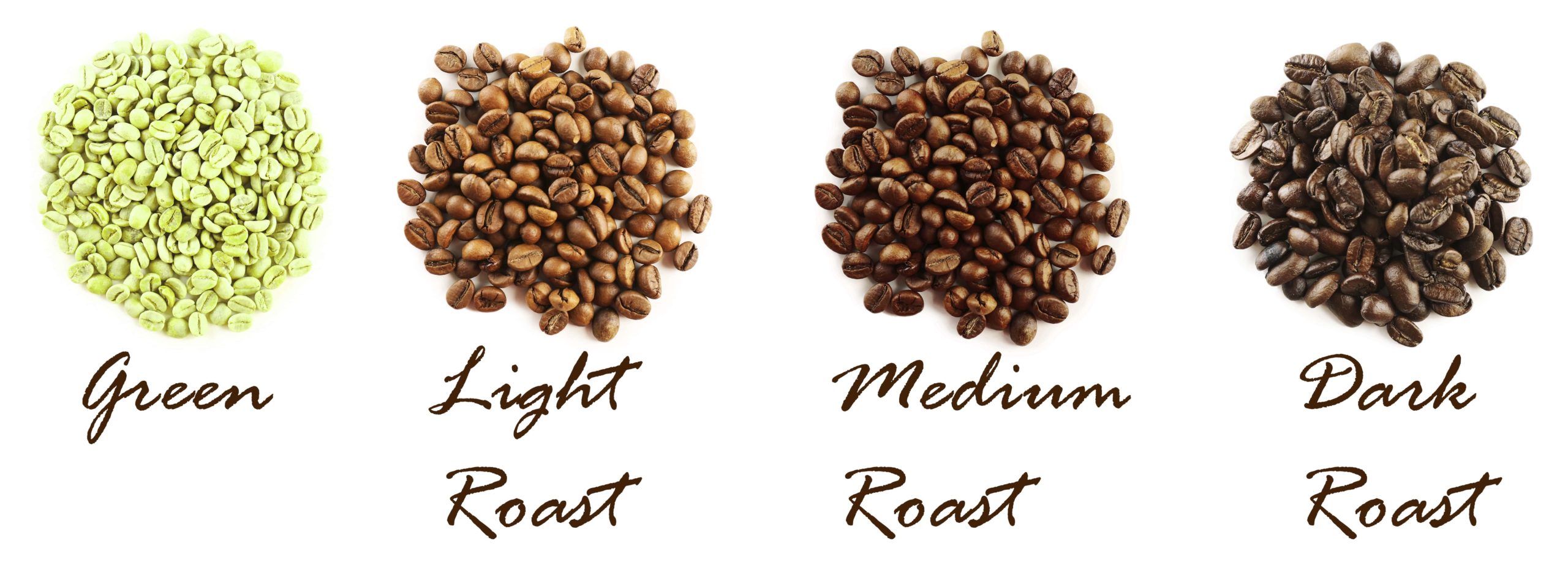
Light Roast
Light roasts typically have the following characteristics:
Color: Light brown.
Surface: Dry with no oils.
Taste: Light-bodied with a highly acidic taste.
Roasting Temperature: Peak internal temperature reaches about 400 degrees Fahrenheit.
Number of “cracks”: Reaches the first crack stage.
Medium Roast
Medium roasts typically have the following characteristics:
Color: Brown.
Surface: Dry with no oils.
Taste: Slightly thicker-bodied with a muted acidic, slightly roasted taste.
Roasting Temperature: Peak internal temperature reaches about 420 degrees Fahrenheit.
Number of “cracks”: Roasted slightly past the first crack stage.
Dark Roast
Dark roasts typically have the following characteristics:
Color: Dark brown.
Surface: Shiny with some natural oil.
Taste: Thick-bodied with a bittersweet, roasted taste.
Roasting Temperature: Peak internal temperature reaches about 445 degrees Fahrenheit.
Number of “cracks”: Reaches the second crack stage.
The Benefits of Buying Locally Roasted Coffee
You can certainly buy coffee anywhere, but with the rise of local coffee roasters, it’s much easier to find fresh coffee made right in your local area. Here are the top three perks if you choose your roasts from a coffee roaster in your community.
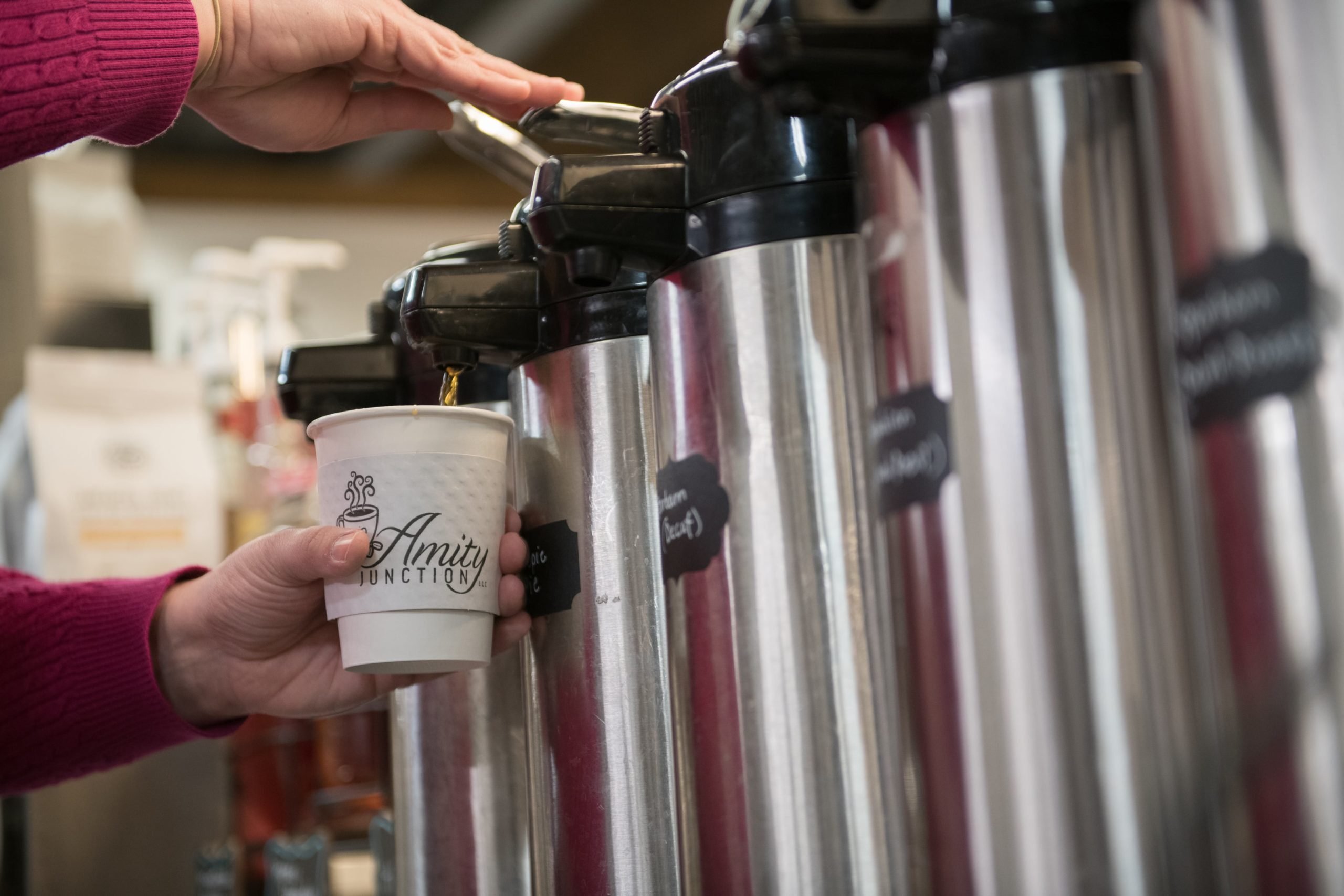
- You’re Supporting Local Business
It’s no secret, there are a lot of benefits to shopping from your local merchants. When you buy locally roasted coffee beans, you’re supporting your own area’s economy. The money you spend will cycle back into it in the form of local taxes or other small business shopping transactions.
Plus, your local roaster has lots of passion for what they do. Their team spends time experimenting with flavors and roasting processes to create a unique blend. Ultimately, you’re getting a more unique cup of joe than when you buy mass-processed beans.
- You Can Trace Where It’s From
Larger companies may not be gathering their beans from farms with the most sustainable practices. Or they may invest in sub-par quality beans.
However, when you buy from a local business, they have direct ties to the farm their product supply is coming from. Plus, they’re picking high-quality beans as they want to give you a premium cup of coffee that beats the competition.
- Guaranteed Freshness
Once it’s been roasted, coffee reaches its peak flavor from a few days to up to two weeks. Local roasters typically add a stamp or sticker with the date they roasted the coffee, which is something many large suppliers don’t do.
Plus, there’s less time between the coffee’s production and your mug. Your roaster has a faster turnaround time between roasting beans and getting them on the shelf since they don’t have to transport their product over long distances.
Coffee beans can certainly last for years before going stale. However, coffee only stays fresh about 7-10 days after the roasting process. So that means when you buy local, you’ll end up with a delicious cup of fresh coffee every time!
Did you know that you can use your used coffee grounds in unexpected ways around the house? Here we identify 8 uses for coffee grounds (aside from making a delicious cup of coffee) so that you can truly make the most of your brew.

